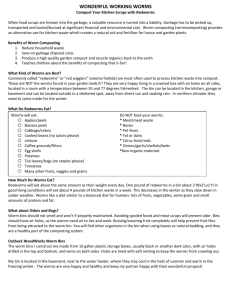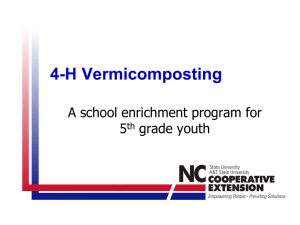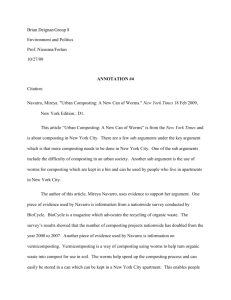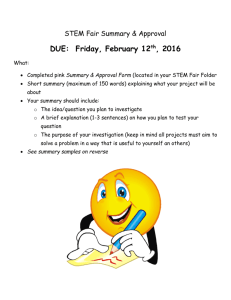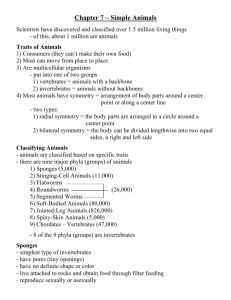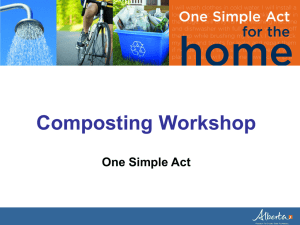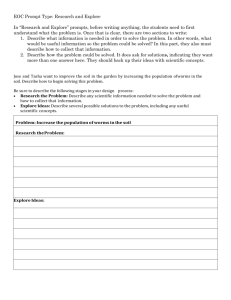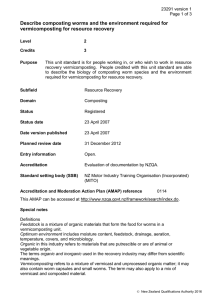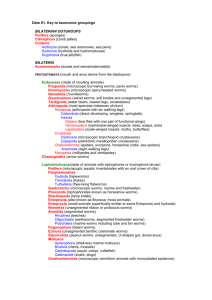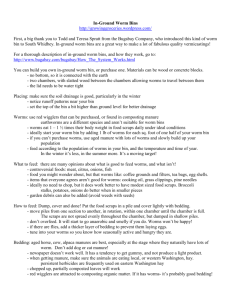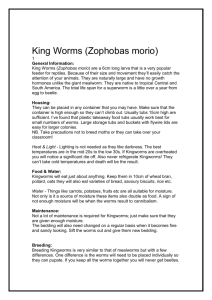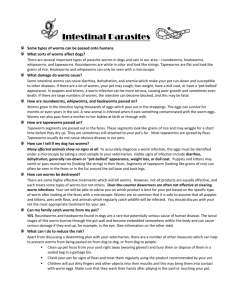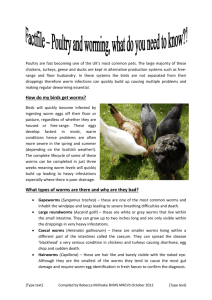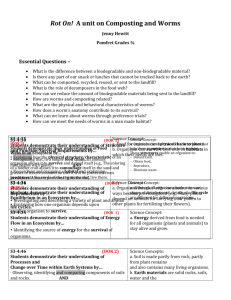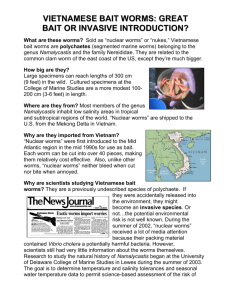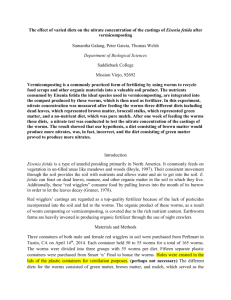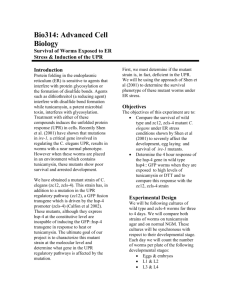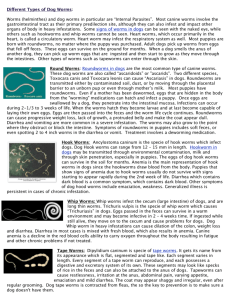Vermicomposting Key
advertisement
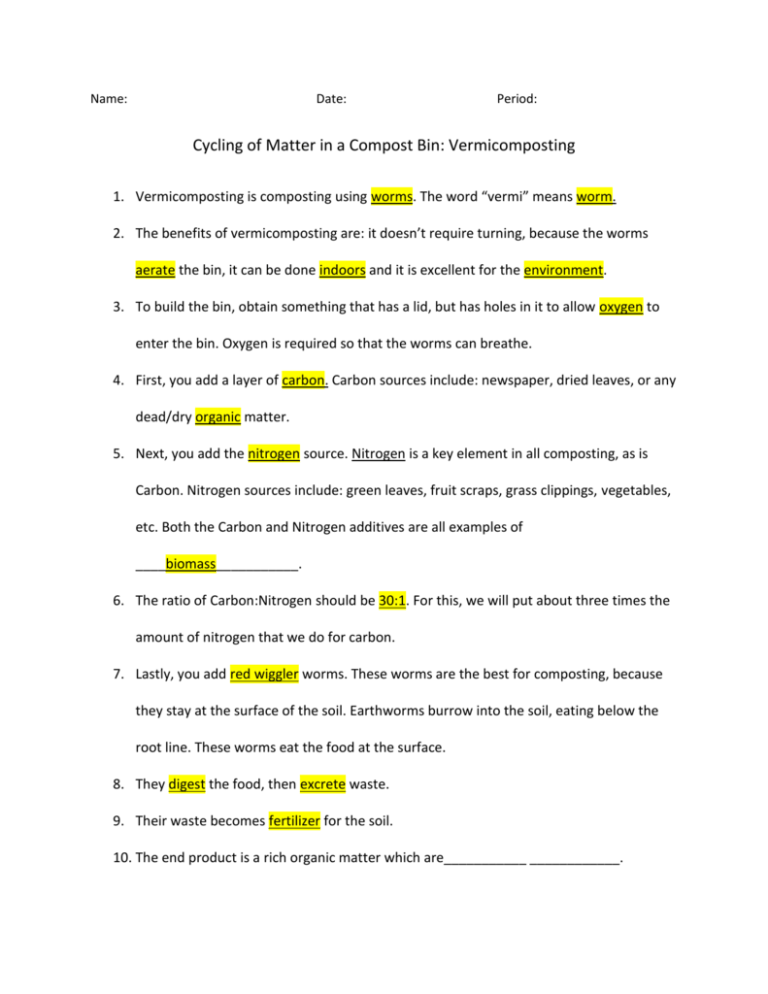
Name: Date: Period: Cycling of Matter in a Compost Bin: Vermicomposting 1. Vermicomposting is composting using worms. The word “vermi” means worm. 2. The benefits of vermicomposting are: it doesn’t require turning, because the worms aerate the bin, it can be done indoors and it is excellent for the environment. 3. To build the bin, obtain something that has a lid, but has holes in it to allow oxygen to enter the bin. Oxygen is required so that the worms can breathe. 4. First, you add a layer of carbon. Carbon sources include: newspaper, dried leaves, or any dead/dry organic matter. 5. Next, you add the nitrogen source. Nitrogen is a key element in all composting, as is Carbon. Nitrogen sources include: green leaves, fruit scraps, grass clippings, vegetables, etc. Both the Carbon and Nitrogen additives are all examples of ____biomass___________. 6. The ratio of Carbon:Nitrogen should be 30:1. For this, we will put about three times the amount of nitrogen that we do for carbon. 7. Lastly, you add red wiggler worms. These worms are the best for composting, because they stay at the surface of the soil. Earthworms burrow into the soil, eating below the root line. These worms eat the food at the surface. 8. They digest the food, then excrete waste. 9. Their waste becomes fertilizer for the soil. 10. The end product is a rich organic matter which are___________ ____________. 11. This is a process of the carbon and nitrogen cycles in that the worms return those nutrients back to the soil by digestion. 12. Note that these worms are hermaphroditic, meaning they have both male and female reproductive parts. They can mate with any other worm of its species. This is an example of sexual reproduction, because two parents are involved. Two sets of DNA are involved in creating offspring.


